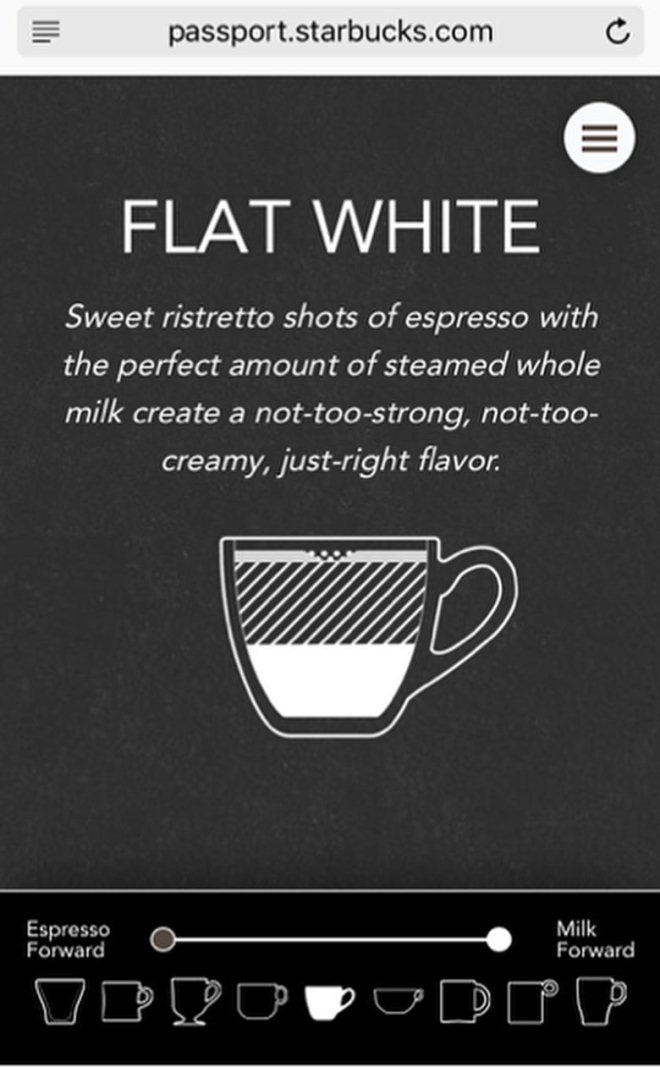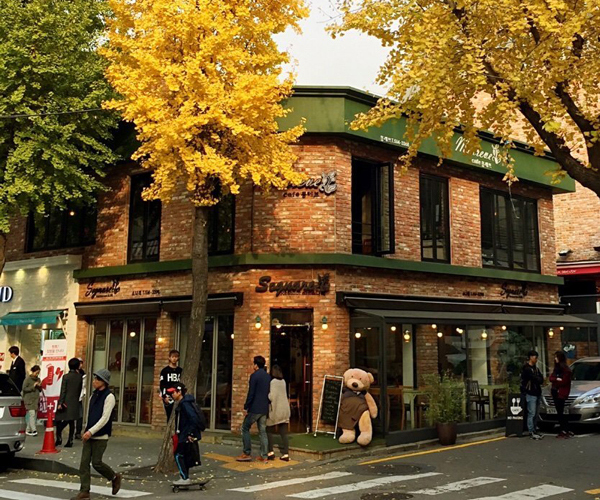The common sense about coffee roasting, the roasting of coffee beans, the mellow taste of coffee
What is baking?
What is the definition of baking?
Usually we say the so-called coffee roasting (coffee roasting) refers to the process of heating the green beans to cause a series of physical and chemical reactions inside and outside the coffee beans, and in the process to produce a variety of flavors such as acid, bitterness, and sweetness of coffee, forming alcohol and color, and converting the green beans into dark brown raw beans.
What is the importance of baking?
Nian Shou Xiaobian checked some information and finally knew that among the factors affecting the taste of a cup of coffee, raw beans accounted for 60%, baking accounted for 30%, extraction accounted for 10%, good baking can bring the personality of raw beans to the extreme and minimize the appearance of defective taste, and vice versa improper baking will completely destroy good beans. The importance of baking is all the more important because the heat, time, and temperature control during baking are difficult to grasp and baking technology is a complex technology.
History of baking
As early as the 13th century, Arabs invented coffee beans in a pot, heated and fried, then ground into powder, and then brewed coffee. The early Arabs liked to bake beans lightly, boil them and drink them with spices such as cardamom.
This method of roasting coffee was later spread to Syria, Turkey and Egypt, where it was customary to fry coffee to black, then grind it into powder, add sugar and boil it in water. After boiling, pour it directly into a small cup without precipitation and drink it with coffee grounds.
After coffee was introduced into Europe in the 17th and 18th centuries, Europeans also followed the Turkish style to fry coffee to black.
Later, due to geographical and cultural differences, Europe was divided into light baked pie dominated by northern European countries such as Germany and Britain and Scandinavian countries and deep baked pie dominated by southern Europe. The former usually bakes the beans to city-full-city, while the latter usually bakes them to italy, french, etc.
Accordingly, North America, which was later dominated by immigrants from northern Europe, followed the light baking, while Latin America, which was dominated by immigrants from southern Europe, followed the medium baking.
Until the mid-19th century, beans were roasted at home in iron pans or ovens throughout most of Europe, and small roasting machines were invented that used closed iron drums instead of iron pans and were controlled by hand over a fire to bake a few pounds of beans at the same time, which was adopted by some coffee shops.
With the advent of large baking machines in the mid-19th century, it became possible to bake beans in large quantities. After the advent of large-scale baking machines, they were continuously innovated, and by the first half of the 20th century, electronically controlled precision machines had appeared, and machines that could continuously bake 5000kg per hour could be achieved.
The emergence of large-scale roasters has changed people's habit of baking at home. Buying packaged roasted beans or coffee powder to cook directly at home facilitates the fast-paced life of modern people. By the 1960s, branded packaged beans dominated the market. But there are problems with mass baking: The quality of raw beans, in order to maintain excessive weight of light roast, lack of freshness caused by the lack of taste, the 1980s began, a "fine coffee movement" initiated in the United States, it advocated people to buy fine raw beans, home roast, drink fresh coffee, the pursuit of quality and taste, home roast began to be valued, and at the same time the pursuit of coffee quality also forced some large roasters to adopt higher quality beans to ensure the quality of roasting.
Development and evolution of baking machine
Coffee beans were fried in iron pans in the early days. After coffee was introduced into Europe, Europeans used Turkish iron pans to fry beans on the one hand, and later invented hand-rotating roasting, which could bake several pounds of beans at the same time, which was used by some coffee shops.
In the 1860s, large roasters began to appear, and in 1867 the use of blowers to cool beans after roasting led to the development of large roasters.
At the end of the 19th century, the advent of hot air roasters greatly improved the speed and efficiency of coffee roasting, making it possible to produce larger quantities.
In the 20th century, baking machines combined with electronics were improved to be more sophisticated, fully automated baking machines with more advanced functions.
IV. Current common types and brands
(i) Common types of baking machines
1 Hot air type
The hot air type bean dryer uses a blower to suck in air, and then let the air pass through a heating coil to raise its temperature. The hot air is used as a heating source to roast coffee beans. The hot air can not only provide the temperature required for roasting, but also use the power of the airflow to stir the coffee beans.
Advantages: high thermal efficiency, fast heating, raw beans heated more evenly, easy to control.
Disadvantages: Because of the high heating efficiency, it is easy to cause the temperature to rise too fast, causing the beans to be "uncooked", and the temperature to rise too high is easy to make the caramelization reaction insufficient.
Taste characteristics: acidity is obvious, taste is relatively clean and simple, but the richness of taste is not enough and lack of depth, and deep baking is easy to produce irritating taste.
2 Direct fire
As the name suggests, direct fire is the direct heating of coffee beans with a flame. Evolution so far, the "fire" of direct fire in addition to the general flame (including gas fire and charcoal fire), but also includes infrared rays and electric heating tubes.
Advantages: Baking time is longer, so that the caramelization reaction is more complete and the taste is richer.
Disadvantages: It is easy to cause uneven baking, and if the temperature is not well controlled, it is easy to burn coffee beans and form a bitter taste.
3 Semi-direct fire and semi-hot air type
The baking method combining the advantages of direct fire and hot air is the mainstream of commercial baking machines at present. Semi-direct roasting is similar to direct roasting, but because there are no holes in the outer wall of the roasting container, the flame does not directly contact the coffee beans; In addition to this, an exhaust device is added to introduce the hot air outside the roasting container into the roasting chamber to improve the roasting efficiency. Another function of this exhaust device is to suck out the silver skin (film attached to the outer layer of coffee seeds), so as to prevent the silver skin from burning in the roasting chamber due to high temperature, thus affecting the taste of coffee beans.
Semi-direct fire semi-hot air machine has the advantages and disadvantages of direct fire and hot air, but according to the adjustment of hot air and boiler speed to change its heating mode. The larger the hot air is opened, the faster the rotation speed is, the closer it is to the hot air type; otherwise, the closer it is to the direct fire type.
5. Reactions and changes occurring during baking
1. drying
When the green beans are heated, the water vapor in the green beans will evaporate at about 135 degrees Celsius, and the green beans will start to turn white.
2. dehydration
As the heat proceeds, green beans turn pale yellow. When the temperature reaches about 160 degrees Celsius, the beans will emit the aroma of baked grain. When heated continuously, the beans will turn light brown.
3. exploded
After about 190 degrees dehydration is completed, due to internal heat expansion caused by cell wall rupture to form a "explosion", then a series of thermal decomposition reactions will occur inside the beans, among which the caramelization reaction will bring the sweetness, dark brown and alcohol of the coffee beans, an explosion will last for about one and a half minutes.
4. secondary explosion
As the heating proceeds, it enters the "second explosion", at which time more intense reactions occur inside the beans. And it gives off a lot of heat. With the end of the second explosion, the raw beans have basically turned black, the beans have expanded to 1.5 times the original, the surface has oil, and the weight has been reduced to about 12%---20%.
5. stop
Usually at the latest after the end of the second explosion about a minute when the temperature reaches 230 degrees when the end of roasting, this time will be a deeper French or Italian roast, when the temperature exceeds 230 degrees and then continue to heat it may make coffee beans spontaneous combustion.
vi. Classification criteria for baking degree
1, roughly divided into light baking, medium baking, deep baking, heavy baking four degrees.
2, each category can be subdivided into two, a total of eight
Light Bake:
Light Light Baked
Cinema Cinnamon Baking
Medium baking:
Medium medium roast
High medium deep roast
Deep Baking:
City City Baking
Full-city baking
Source: Coffee Culture
Important Notice :
前街咖啡 FrontStreet Coffee has moved to new addredd:
FrontStreet Coffee Address: 315,Donghua East Road,GuangZhou
Tel:020 38364473
- Prev

Starbucks Open Coffee Handbook conveys coffee professional learning Starbucks coffee making methods
Since the 1990s, Starbucks has been distributing a printed book called Starbucks Coffee Passport to its employees. This booklet can be understood as a guide for Starbucks baristas, including coffee expertise on how to make coffee items and the flavor of each baked bean. Although this information is not confidential, it is always a copy.
- Next

Do Koreans drink coffee more often than rice and drink two cups of coffee a day?
Coffee, a traditional western drink, is as popular in South Korea as Christianity is in this East Asian country (about 30% of Koreans believe in Christianity, compared with 50% in Seoul). It is unmatched by other countries in the non-western world. According to Yonhap news agency Seoul on January 11, South Korea's Ministry of Health and Welfare and the Ministry of Disease Management issued on the 11th.
Related
- What is the standard process for the purpose of coffee cup testing? What is the difference between hand-brewed coffee and cup testing?
- How to use hand-brewed coffee paragon small golden balls? How does cold coffee lock in the aroma of coffee?
- Is American coffee black? What is the difference between American coffee and drip coffee?
- Unexpected! Well-known tea beverage brand Lele Tea will withdraw from the Zhengzhou market!
- Starbucks enters the fashion and beauty industry?! Netizen: Give me an ice American eye cream
- Why can American refills for free? The difference between Americano and American drip pot coffee
- Being chased out of the rain in front of Starbucks?! Store: Sheltering from rain under umbrellas poses a safety hazard
- The white moonlight has changed?! Lucky launches "Big Winter Pear American"
- Hand-brewed coffee three-stage method, high-sweet and universal brewing method to share! What does the high sweet water level of hand-brewed coffee mean?
- What is the difference between raw, refined and full espresso coffee? How to extract espresso and taste good?

